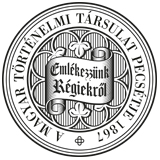Századok – 2011
TANULMÁNYOK - Hermann Róbert: Lázadó csordák - oktrojált alkotmány. Egy legenda története V/1117
LÁZADÓ CSORDÁK - OKTROJÁLT ALKOTMÁNY 1145 érdemes megemlíteni: So/nogyi Évát, illetve Deák Ágnest, akik az oktrojált alkotmányt egyértelműen a kremsieri parlament alkotmánytervére adott válaszként értelmezik, és időzítésében nem tulajdonítanak szerepet a magyarországi hadi helyzet alakulásának.11 8 Összegezve tehát megállapíthatjuk: miként a fentebb elmondottakból kiderült, a Teoíll Lapinski-féle szöveg egyértelműen hamisítvány, amely nem jutott el a császári udvarba és az osztrák kormányhoz. Alfred zu Windisch-Grätz tábornagy létező hadijelentése ugyan szintén nem mentes a túlzásoktól, de a teljes, döntő győzelmet nehéz lett volna belőle kiolvasni. Ám akármi is volt a hiteles hadijelentésben, ez semmi esetre sem befolyásolta az olmützi oktrojált alkotmány kibocsátásának és a kremsieri parlament feloszlatásának elhatározását és időpontját, hiszen mindkét döntés már jóval korábban megszületett. E tekintetben tehát a jövőben érdemes lesz módosítani az összefoglaló munkákat és a tankönyveket. Egy jól hangzó idézettel és egy legendával kevesebb. S adódik a tanulság is: néha hasznos elolvasni azt is, mit ír (vagy mit nem ír) a másik fél egy számunkra fontos(nak tűnő) eseményről. REBELLIOUS HERDS, ENFORCED CONSTITUTION by Róbert Hermann (Summary) The present study aims at revisiting a legend which has become deeply rooted in Hungarian historiography. According to this, after the battle at Kápolna, which took place on 26-27 February 1849, field marshall Alfred zu Windisch-Grätz, commander-in-chief of the imperial and royal troops in Hungary, sent a report to the imperial court in which he informed about the complete defeat of the Hungarian army, and predicted the imminent end of the war in Hungary. It was on the basis of this legend that the Hungarian historians opined that this report was in the background of the decision taken by Francis Joseph I and the Schwarzenberg government to dissolve the Austrian parliament of Kremsier and to issue the enforced constitution of Olmiitz. Yet the author has come to the conclusion that it was in fact Teofil Lapinski, a Polish officer of artillery, who had served as a captain in the Hungarian war, who first published the report in his memoirs, and was in all probability its very author. The study demonstrates that the Austrian historians saw no connection at all between the report of Windisch-Grätz and the issue of the enforced constitution, as the decision about the latter had in fact been taken long before the news of the battle of Kápolna arrived. It also states that in the real reports of Windisch-Grätz there is no trace of either over-confidence or the statements cited above. The author reconstructs the series of decisions which led to the dissolution of the parliament of Kremsier and the issue of the enforced constitution of Olmiitz, examines the echoes which the battle of Kápolna had in Vienna, and finally describes the infiltration of the legend into Hungarian historiography. hadtörténete. Bp. 2001. 244.; Uő\ Forradalom és szabadságharc 1848-1849. (Magyarország története 14.) Bp. 2009. 68-69. 118 Somogyi Eva: Abszolutizmus és kiegyezés 1849-1867. (Magyar História) Bp. 1981. 18., 26-30.; Uő: Ferenc József. (Magyar História. Életrajzok) Bp. 1989. 31-32., 43^14.; Deák Ágnes: „Nemzeti egyenjogúsítás". Kormányzati nemzetiségpolitika Magyarországon 1849-1867. Bp. 2000. 41-43.; Ágnes Deák: From Habsburg Neo-Absolutism to the Compromise 1849-1867. Translated by Matthew Caples. (Atlantic Studies on Society in Change 131., East European Monographs DCCXXXVII.) New York 2008. 29-33.
